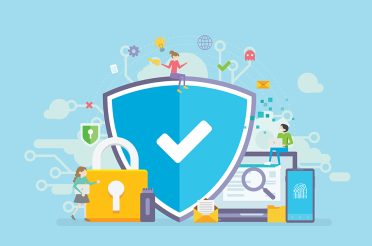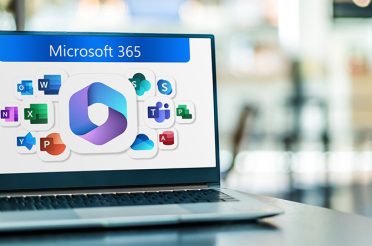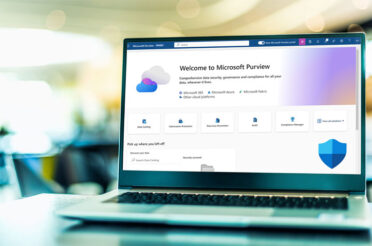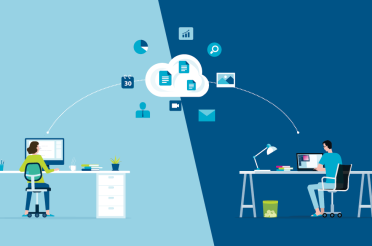The number of applications and digital tools that employees use on a regular basis is growing, with some departments utilising between 40 and 60 different digital tools to carry out their tasks. Many apps generate alerts and notifications, such as the “ping” heard when a user is mentioned or a popup that appears when an update is released. Because of the high demand for attention, people may ignore their alerts, especially if they receive a large number of them.
Here are some of the ways that people are regularly exposed to alerts:
- Email banners
- Team communication tools
- Text messages
- Through mobile apps
- Through software apps
- Websites which have been granted permission to send alerts
The prevalence of applications in our work and personal lives can lead to app fatigue, which is causing concern around cybersecurity practices. Some people are receiving the same alert on multiple devices, which can cause them to neglect or ignore their notifications altogether, leading to an impact on their productivity along with their cybersecurity management.
How Does App Fatigue Create Cybersecurity Issues?
People Begin Ignoring Updates
When alerts interrupt what people are doing, they can feel like they are being imposed on. This can lead to them ignoring important tasks, such as initiating an update to an app.
People who receive a lot of alerts are prone to ignoring at least some of them. As soon as an alert comes in it is easy to dismiss it and this can be problematic if the alert contains a vital security component.
Ignoring app updates is ill-advised. Many updates include security patches for vulnerabilities which have been recognised. If they are not implemented, this can lead to a device or network being compromised and exposed to the risk of a cyberattack or breach.
Reusing Passwords To Secure An App
Another by-product of app fatigue is password security. The more apps a person uses the more likelihood there is that they will reuse a password. It is estimated that passwords are reused 64% of the time, which can lead to a vulnerability if one password is discovered by a cybersecurity criminal.
Stolen credentials are a key component of security breaches, and if a hacker has gained access to a well-used password it can lead to multiple accounts and networks being put at risk.
Alerts May Be Turned Off Altogether
The number of alerts that are received daily can be considerable. Alerts for replies to group threads or @all tags can add up very quickly, but turning off all notifications altogether is not a safe practice to undertake. While turning off alerts may bring peace of mind, it can also exclude important security updates from becoming known and implemented.
What Is The Solution to App Fatigue?
App use is now a part of most of our daily lives, and frequent usage brings alerts and notifications with it. While alerts are largely unavoidable – for good reason – some measures can be put in place to ensure that good security practices are maintained and retained.
Streamline Applications
From both a productivity and security point of view, the fewer apps that are installed and used on a device, the better. Logically, the fewer the apps, the less the risk, and the issue of frequent notifications and reused passwords is also reduced.
Employees can regularly examine the apps that they use and decide which need to be maintained and which can be deleted. For example, some organisations use two or more apps for the same purpose. Umbrella platforms like Google Workspace or Microsoft 365 can also be useful as they include many work tools as part of their offerings, and employees only require a single login to access them.
Let Your IT Team Manage Notification Settings
It can be difficult for employees to decide which alerts require their most attention. Letting your IT team manage app notifications will ensure that staff are not distracted by constant alerts, while still allowing them to receive critical security-related information, which needs to be acted upon.
Automate Updates
A best practice for cybersecurity is to automate app, device, and software updates. This removes the need for employees to be involved in security management, which will also lead to an increase in productivity, as it is one less task that an employee needs to undertake. Automating updates through a managed solution will improve an organisation’s overall security, and it also mitigates the risk of a vulnerable app being introduced to a network.
If you need assistance implementing an automated update process, please let us know.
Communication Regarding Alerts And Notifications
Employees might not turn off unnecessary alerts because they are worried that they may get into trouble, and management may not realise that constant app notifications are reducing their staff’s productivity. A conversation between management and employees regarding alerts can quickly address any issues, such as the importance of certain notifications, along with any associated security issues.
Do You Need Help With Your Application Management?
The increasing prevalence of apps in the workplace means that strong cybersecurity and tech management practices are as important as ever. If you need help managing your applications or processes, please give us a call on +61 7 3414 0600, or send us a message via our contact page.








